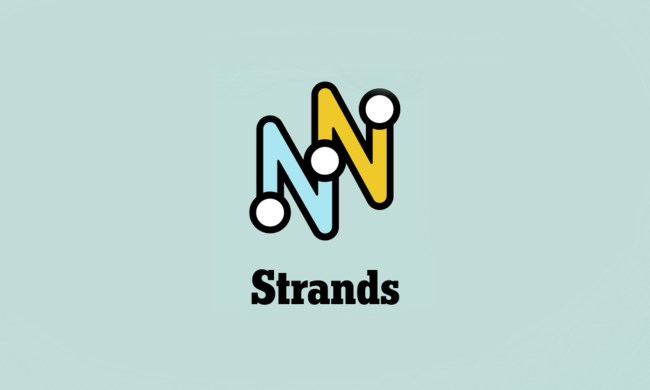
Thirty-five years ago, Nintendo released a gaming handheld that would change the gaming landscape forever. The Game Boy might seem archaic now with its lack of a backlit screen and minimal button placement, but it resonated with a lot of people, sold over 118 million units, and inspired a generation of video game hardware and software creators. It’s even a piece of hardware that modern companies like Panic reference when creating a modern gaming handheld like the Playdate.
Playdate project lead Greg Maletic revealed to Digital Trends that Panic originally wanted the Playdate to emulate the look and feel of Nintendo’s Game & Watch handhelds, which pre-dated the Game Boy. Panic even used SHARP Memory LCD to replicate the look of Game & Watch, but it found that “attempts at making games in this style were disappointing.” In this moment that would determine the future of the Playdate as a handheld, Panic looked to the Game Boy.
“The success of the Game Boy gave us confidence that it was possible to create beautiful games in monochrome, allowing us to keep the Sharp display we’d already chosen,” Maletic tells Digital Trends when asked for the company’s reflections on the Game Boy ahead of today’s anniversary. “We also adopted the Game Boy’s control layout, ultimately deciding on its B-A button order rather than the A-B setup that initially seemed more natural to us. Nintendo’s reasoning that the primary button should be under the right thumb — and named ‘A’ — made sense.”
Design decisions made by Nintendo in the 1980s are still impacting video games and the platforms that support them in the 2020s. Speaking to creators inspired by the Game Boy, reverence for the iconic retro handheld remains strong and continues to shape the gaming hardware we use today.
Stimulating the mind
Even now, the Game Boy’s sleek design still feels iconic, from its distinct rectangular shape to its minimal buttons. It has some defining shortcomings too, like the lack of a backlit screen. Even with those flaws, the handheld’s distinct look, low price, and strong game library made it stand out compared to its peers in 1989.
Retro aesthetics are a great tool for stimulating the player’s imagination.
It left a lasting impact on developers like Christophe Galati, who would go on to make the Game Boy-inspired platformer Save me Mr Tako after being influenced by games his brother, a collector, picked up.
“I was able to play a lot of Nintendo and Japanese games that were not from my generation, including the original Game Boy,” Galati tells Digital Trends. “I started to make games when I was 12 as a way to survive and escape my traumas. I believe that games saved me, so that’s why I hope I can return the favor by helping people with my games.”
Ten years ago, on the 25th anniversary of the Game Boy, Galati ate takoyaki and got the idea of making a Game Boy-inspired platformer starring an octopus. The result is Save me Mr Tako, a game about a pacifist octopus trying to stop a war between humans and octopi. It plays out as a 2D platformer reminiscent of Game Boy games like Kirby’s Dream Land, although it expands the game’s color palette far beyond what the original Game Boy’s green-hued screen could offer (although it does pay tribute to that).

Initially released in 2018 before getting a touched-up Definitive Edition in 2021, Save me Mr Tako stands as one of the defining games paying tribute to the Game Boy. “I was really inspired by titles like The Legend of Zelda: Link’s Awakening, Metroid II: Return of Samus, Survival Kids, and Kirby’s Dream Land. You’ll see a lot of references in the game. I believe retro aesthetics are a great tool for stimulating the player’s imagination,” Galati said.
It’s inevitable that art will eventually inspire other art, but it’s not just the Game Boy games that have a lasting influence. The actual hardware has had an even stronger impact. In the thick of the 2020s, some companies still don’t want to leave the Game Boy’s original design behind. A market has popped up for handhelds that look and feel like the Game Boy and can play original Game Boy games. The Analogue Pocket and Miyoo Mini are some notable examples of this.
The former modernizes the Game Boy’s design and supports cartridges from a wide variety of gaming handhelds; the latter is an emulator that apes the Game Boy’s look. Others are going a step further and creating systems that can also serve as their own platforms. The Playdate is one already-released example, while the Chromatic is an upcoming handheld from ModRetro that more blatantly wears its Game Boy inspiration on its sleeve with its rectangular design.

The Chromatic is the latest piece of hardware from ModRetro. According to ModRetro CEO and co-founder Torin Herndon, the idea to “build the ultimate tribute to the Game Boy” came from Palmer Luckey, a controversial video game industry figure who also played a part in the creation of the Oculus Rift. It can play Game Boy and Game Boy Color cartridges using field programmable gate array-based emulation and supports games made specifically for the Chromatic. That includes a new version of Tetris and the eerie dungeon-crawler Traumatarium Penitent.
Herndon tells Digital Trends that ModRetro wants to take what they considered the best parts of the handheld, like its changeable cartridges and simple control layout, while improving on shortcomings like its lack of color. He explained that ModRetro “craved seeing the original art exactly as it was intended,” so it went out of its way to create a custom 160 by 144 pixel display for Chromatic.
That custom-made display is something that Herndon says “nobody in their right mind would tackle when digital upscaling is accepted, and one can simply buy any display off the shelf.” However, ModRetro felt passionate enough about the Game Boy to the point that it created “the only newly manufactured 160 by 144 color backlit IPS display in existence,” not just to recapture the feeling of the Game Boy but to build upon it.
An undeniable impact
For a fairly rudimentary device, the Game Boy is one of the most formative pieces of gaming hardware out there. Its excellent games, including Kirby’s Dream Land, The Legend of Zelda: Link’s Awakening, and Tetris, would go on to inspire countless titles that came after them and remain playable today through services like Nintendo Switch Online. On the hardware front, it exposed well over 150 million people to the charm of playing games on the go.

More players than ever experience games that way, whether it’s on a dedicated gaming platform like the Nintendo Switch, a portable PC like the Steam Deck, or an iPhone. For the people who stuck around the gaming industry, the Game Boy’s influence mattered tenfold, even to those like Galati who were exposed to its library years after the fact.
It’s because of the Game Boy that Galati eventually felt inspired to create Save me Mr Tako and is now working on a Game Boy Advance-inspired sequel Tako no Himitsu: Ocean of Secrets. Herndon got into Stanford by writing an essay on escapism in classic games and leveraged that degree to work at Oculus VR and now ModRetro. Playdate and its charming crank saw the light of day because of the Game Boy’s dim but guiding light.
Our formative gaming memories follow us for the rest of our lives, and for many developers, the Game Boy has a permanent spot in their minds. Nintendo’s experimental handheld still literally shapes the hardware we can play games on and the look and feel of what we can play on them. The Game Boy stimulated the imaginations of countless people, and 35 years after its North American release, we are still seeing the fruits of that now.




